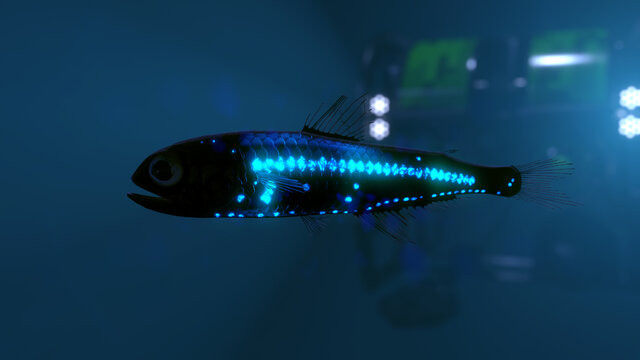By Moira Donovan.
The ocean has a way of upending expectations. Four-story-high rogue waves peak and collapse without warning. Light bends across the surface to conjure chimeric cities that hover at the horizon. And watery wastelands reveal themselves to be anything but. So was the case for the scientists aboard the USS Jasper in the summer of 1942. Bobbing in choppy seas off the coast of San Diego, California, acoustic physicist Carl F. Eyring and his colleagues, who had been tasked with studying a sonar device the navy could use to detect German submarines, were sending sound waves into the deep. But as the echoes of their tests came reverberating back, they revealed a puzzling phenomenon: everywhere the ship went, the sonar detected a mass nearly as solid as the seafloor, lurking about 300 meters or more below the surface. Even more mysterious, this false bottom seemed to shift over the course of the day.
People had their theories—shoals? faulty equipment?—but apart from registering the anomaly, scientists let the mystery slide. (There was, after all, a war on.) It wasn’t until 1945, when oceanographer Martin Johnson dropped nets into the Pacific to take a closer look, that the culprit was definitively unmasked: a vast cloud of marine animals, most smaller than a human hand, that moved from the deep ocean to the surface and back every day.
Since the 1940s, scientists have been unpicking the mysteries of this vertical migration and the creatures taking part in it. Until recently, research focused on zooplankton and other small organisms, neglecting their larger predators. But technological advances have made it possible to look up the food chain.
Read more at hakaimagazine.com

